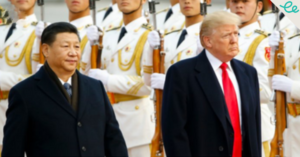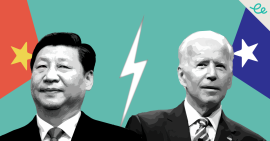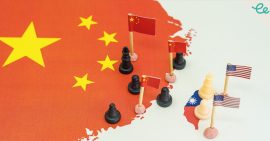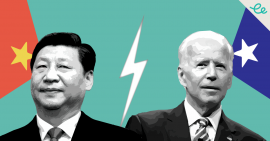The trade war continued to roil US China relations as Trump announced punitive tariffs on a further $200bn of imports from China, and considered raising the stakes by increasing this level. This article is a summary of major US China news in July 2018.
Administration advisers urged the US President to force Chinese negotiators to the table by applying tariffs as high as 25% on $200bn of Chinese imports, up from an original proposal for 10%, reported the Wall Street Journal. Trump’s earlier announcement prompted angry reaction from Beijing, which called the move “totally unacceptable”. China’s yuan and stock indexes fel. A spokesperson for China’s Ministry of Commerce vowed that countermeasures would be taken, although no specific actions were mentioned.
Worried about the impact on economic growth of the trade war with the US, and the de-risking campaign, China’s policy makers took action. New moves aimed at averting an excessive domestic slowdown came from both the monetary and fiscal sides. The central bank reportedly told some banks that it will relax a specific capital requirement to support lending.
The State Council, responding to calls for more fiscal spending, announced it would pursue a more active fiscal policy to help tackle the uncertainties facing the economy, offered deeper cuts in tax and nontax fees, and faster issuance of local government special bonds amounting to Rmb1.35trn to support ongoing infrastructure projects.
Rumours spread of whispers in the corners of the State Council building in Beijing that could spell trouble for President Xi Jinping. Some claim tensions arising from the Sino-US trade war are being leveraged against Xi. Many have dismissed these rumours, but such whispers often find a way of sticking, and long-term political risk has certainly increased in China. The biggest current concern is that Xi’s anti-corruption campaign has amassed far too much power in the months since its launch and could be leveraged in moves that ultimately could be Xi’s undoing.
Beijing said closer ties with North Korea were key to its economic revival plans. Trump claimed China was “exerting negative pressure” on North Korea. As trade tensions tighten, the US upped the geopolitical stakes by sailing two US warships through the Taiwan Strait, prompting Beijing to slam Washington for “playing the Taiwan card”. As China extends its $1tn “Belt and Road Initiative”, the Trump administration responded with a $113m package of energy and infrastructure initiatives in emerging Asia.
China continued to insist it will not use its currency as a weapon in any trade war, yet recent yuan depreciation likely reflects investor concerns to the contrary. Central bankers vowed to keep the currency stable – Yi Gang, PBoC governor, published an article on the bank’s website promising to “keep the exchange rate stable at a reasonable and balanced level”.
The weaker the yuan, the stronger China’s position would be in any trade war, but any escalation from China immediately after Washington’s trade tariffs come into effect would appear highly provocative, so it seemed unlikely Beijing would manipulate the currency so soon. For the time being, the central bank appeared to have friends, both at home and abroad.







Comments are closed.